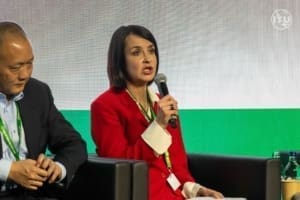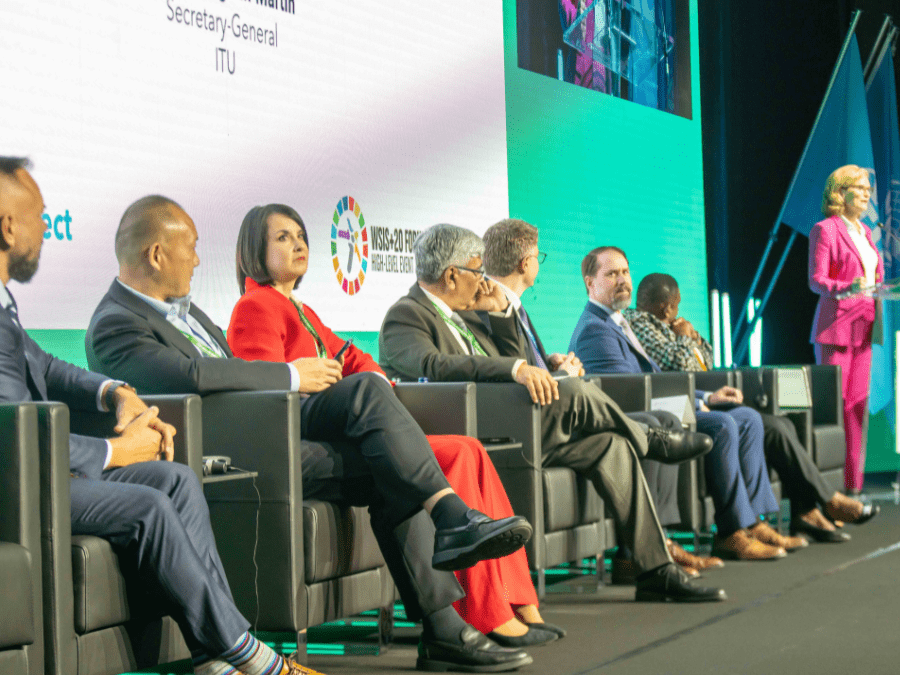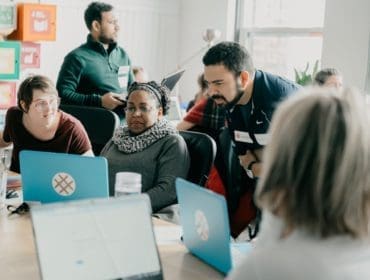Connecting people to greater possibility is why we exist, so this work is core to what we do. Connectivity can be a social determinant of health, education, and prosperity. With prosperity so tied to connectivity, we believe everyone should be able to participate.
Specifically, AT&T is committed to helping bridge the digital divide through efforts that promote broadband affordability, availability, and adoption. We are also investing our resources and knowledge to advance the digital skills needed to thrive in the classrooms and workplaces of today and tomorrow, specifically through AT&T Connected Learning℠. Our company also contributes to programs focused on empowering girls and young women with tech and STEM skills, as well as programs focused on increasing the representation of women in STEM careers and supporting women entrepreneurs.
With a continuation of these priorities and passions in mind, AT&T is a proud supporter of the Partner2Connect Digital Coalition (P2C) led by the International Telecommunication Union (ITU). We welcome P2C as a platform to engage all stakeholders to mobilize and announce new resources, partnerships, and commitments to achieve universal and meaningful connectivity. I was so pleased to participate in the Partner2Connect High-Level Panel in Geneva yesterday, as part of the WSIS+20 High-Level Forum, where I had the privilege of announcing a major additional pledge from AT&T towards P2C.

While P2C aims recognize the priority need of connecting those in least developed countries, landlocked developing countries, and small island developing states (LDCs, LLDCs, and SIDS), the Coalition has the goal of connecting the entire world – calling attention to a need for closing the digital divide for populations everywhere. Similarly, AT&T wants to connect the unconnected – including bolstering connectivity amongst historically disadvantaged populations. So, in addition to our prior P2C pledges, I am happy to share that AT&T is extending their commitment from $2 billion to $5 billion this decade: to help 25 million people get and stay connected by 2030.
- At AT&T, we care about connecting people. It’s our purpose. And why we have committed $5 billion since 2021 to unlock the benefits of the internet for millions of people. But we can’t do it alone, and neither can anyone else. It’s going to take a collective effort – public and private organizations working together – to get there.
- Our commitment will address the main barriers to connectivity – affordability and adoption – for those who need it most.
To achieve this, AT&T plans to expand its Connected Learning program resources to reach more people through efforts such as laptop distributions and at Connected Learning Centers across the country. All these efforts help students and families get connected and find value in that connectivity. Through AT&T’s Connected Learning Centers (CLCs), we collaborate with community-based non-profit organizations like the Boys and Girls Clubs of America to provide digital skilling courses and workshops catering uniquely to the needs of K-12 students, seniors, adults in need of workforce readiness skills and Americans with disabilities. We’ve already reached more than one million people in need through digital literacy, devices and internet connections.
Each Connected Learning Center receives a charitable contribution, is equipped with AT&T internet and computers often supplied by corporate partners like Dell and receives support from AT&T Believes volunteers through digital literacy and learning resources and workshops. Additionally, we work with the Public Library Association and the National PTA to provide in-library and after-school digital skilling workshops through ScreenReady™, The Achievery and Digital Navigators programs. Since 2021, we have opened 41 CLCs in 16 states, with plans to have 52 CLCs open by mid-2024.
“Ambitious initiatives like the Partner2Connect Digital Coalition require ambitious partners,” said ITU Secretary-General Doreen Bogdan-Martin. “Through this strong commitment to Partner2Connect, AT&T sends a strong signal that we all need to come together to tackle affordability and other barriers to meaningful connectivity for disadvantaged populations everywhere.”
Working to close the digital divide is the linchpin of AT&T’s mission to leave no one behind when it comes to online opportunity. This commitment is a pillar of the work the company does to help build digital infrastructure – which is also a key tenet of Partner2Connect. This is the fourth individual pledge AT&T has made to P2C, in addition to two joint pledges made with Canada Learning Code, and with the United States Telecommunication Training Institute (USTTI).
—
ITU – the United Nations agency for telecommunications/ICTs – announced the launch of P2C in September 2021, aiming to mobilize commitments to foster meaningful connectivity and sustainable digital transformation in communities across the globe. Partner2Connect encourages governments, companies and other organizations to submit pledges across four focus areas: ACCESS – Connecting People Everywhere; ADOPTION – Empowering Communities; VALUE CREATION – Building Digital Ecosystems; and ACCELERATE – Incentivizing Investments. This pledge aligns with P2C Focus Areas 1 and 2: Access and Adoption, and our efforts around this pledge is targeted to impact several groups, including children, older persons, Indigenous peoples, and persons with disabilities. ITU’s aim with Partner2Connect – making bold moves that inspire transformational change – aligns closely with what we do at AT&T. To date, P2C has mobilized over $49 billion worth of pledges representing expertise, resources, and investment for policies, projects and programs seeking to reach the world’s hardest-to-connect communities, with the aim of mobilizing $100 billion by the end of 2026.





